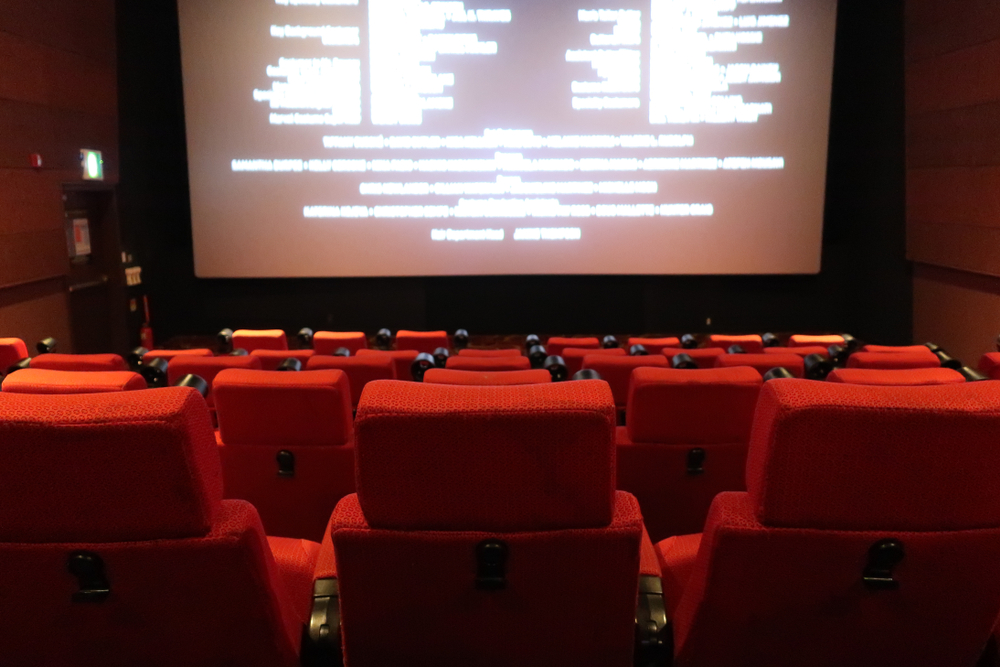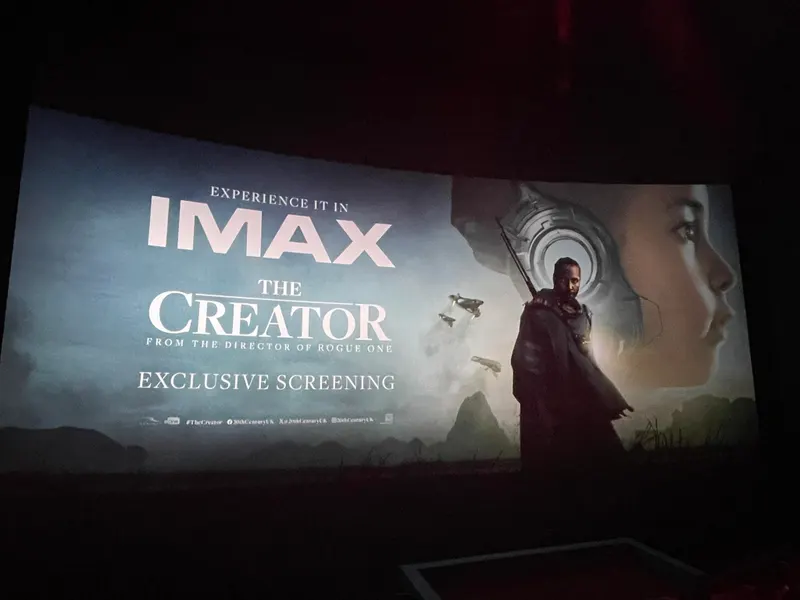Recently I had an opportunity to see an early screening of The Maker, the new film by Gareth Edwards. As overseer of movies like Godzilla, and Rebel One: A Star Wars Story, many were interested to see what he would think of.
The film was trailed by a question and answer with the man himself facilitated by film moderator Edith Bowman - and on top of that after the film I startlingly had an opportunity to meet and visit with Gareth Edwards myself momentarily.
On the off chance that you're a science fiction fan, The Maker checks every one of the containers. Set in 2070 the USA are fighting simulated intelligence controlled robot simulants that have dropped an atomic rocket on Los Angeles.

Looking for the "maker" of the high level simulated intelligence that is controlling the robot powers, occasions turn out badly for John David Washington's Joshua.
He is subsequently entrusted with finding the adversary's definitive weapon, while likewise looking for his better half. A definitive weapon ends up being a little kid, driving him down a fundamentally unique way from the one he was anticipating.
Edwards is forthright about his persuasions and the story, look and feel of the film has exemplary motion pictures like Eliminator 2, Bladerunner, Symbol, and End times Now writ huge.
I figure you can see obviously that this is getting from such countless other astounding movies that motivated me," he said in the back and forth discussion. "It's sort of an adoration letter to the film that I've kind of missed as of late, a smidgen.
This wish to look back to exemplary movies is reflected in the decision of camera and focal points utilized on the film by Edwards and his two cinematographers Greg Frasier, (known for The Batman) and newbie Oren Soffer.

Leaving numerous cinematographers startled, the principal camera utilized on the film is the Sony FX3, a moderately low-end 'prosumer' model from Sony's film line-up, the collection of which can be purchased for a simple $4,000 or something like that.
In any case, it's as yet ready to produce pictures that meet the standards for this to be viewed as an "IMAX" film. Be that as it may, some setting should be. The film has the promoted tag "Experience it in IMAX", and that implies that it wasn't caught on an IMAX-confirmed camera (neither one of the movies based or computerized) and the picture never opens up to offer an extended IMAX viewpoint proportion.
All things considered, what it implies is that the film has gone through the IMAX computerized media dominating framework (DMR) process so it looks perfect on IMAX screens which are ordinarily a lot bigger than ordinary ones.

Be that as it may, while IMAX screens go for extra picture level, this film goes for width. The Maker has been shot on the Sony FX3 related to a Chart book Degree anamorphic focal point, to convey a perspective proportion of 2.76:1 - the broadest conceivable film viewpoint proportion broadly utilized by Ben Hur in 1960.
It was practically unexpected then to see this on the BFI's 1.43:1 screen, which is tall enough that it could nearly have had the film stacked two times onto the screen (hypothetically at any rate - in fact the single laser advanced projector can't fill the whole screen).
As you would expect, the film was put in the focal point of the screen and the space above and underneath caused no issues and I was totally brought into the phenomenal cutting edge world-building pictures being shown. I was likewise floored by the IMAX 12-channel sound, which was strong, perfect and vivid.

Be that as it may, after the movie, I had the opportunity to momentarily test chief Gareth Edwards about this decision of viewpoint proportion uncovering something I wasn't anticipating. He said that the camera really caught pictures at an amazing 3.5:1 and that they needed to remove the edges of the picture to get down to the generally exceptionally wide 2.76:1.
What's more, remarking that he shouldn't actually be expressing it in an IMAX theater, that's what he uncovered "we lost a ton of cool detail, however assuming that you see it in ScreenX you'll get to see a portion of the additional picture.
For those that don't have any idea, ScreenX is a configuration that offers extra pictures down the side walls of the hall (indeed, truly), growing the picture to the sides, instead of above and beneath that picture as IMAX does.
I concede I have recently have some glaring misgivings about ScreenX, having first given it a shot a couple of years prior. Be that as it may, I as of late went to see Gran Turismo at the film and, as I'd missed it in IMAX, made a move to look at it in ScreenX.
Amazingly, I was astonished at how great it was. It took some time for the film to arrive at a scene that utilized the sides yet it ended up being worth the pause: the configuration was the ideal counterpart for a dashing film with the view blazing past like the windows in a vehicle. The sound was additionally first class.
/cdn.vox-cdn.com/uploads/chorus_asset/file/24971436/the_creator_movies_to_watch_next.jpg)
Having seen The Maker in IMAX I can confirm that the size of the IMAX picture is a fine counterpart for the size of the world that Edwards has made, while the sound is a victor as well.
Dolby Film is one more exceptional decision, with its extraordinary brilliance, dark levels and Dolby Atmos sound - also really comfortable seats. The projectors are additionally completely 4K, matching the computerized transitional made for the film.
While most Dolby screens are 1.85:1 there will be critical dark bars top and base to oblige the super wide 2.76:1 picture, and keeping in mind that the dark level method you won't see them it will make the picture marginally more modest - so maybe one more score for an enormous IMAX screen.
Customary premium huge arrangements like AMC BigD in the USA, or Superscreen at Cineworld in the UK, will give you an extra-enormous screen, with 4K projection and now and again Dolby Atmos sound. In any case, in the UK different motion pictures are at present occupying the Superscreen environments so that is impossible.
Accordingly, IMAX, ScreenX, and Dolby Film are your top notch decisions. On the off chance that you don't know which, I'd constantly default to IMAX, yet ScreenX is the organization that makes me captivated to go look at the film again for that extra width - particularly assuming the chief himself has given it the gesture.







